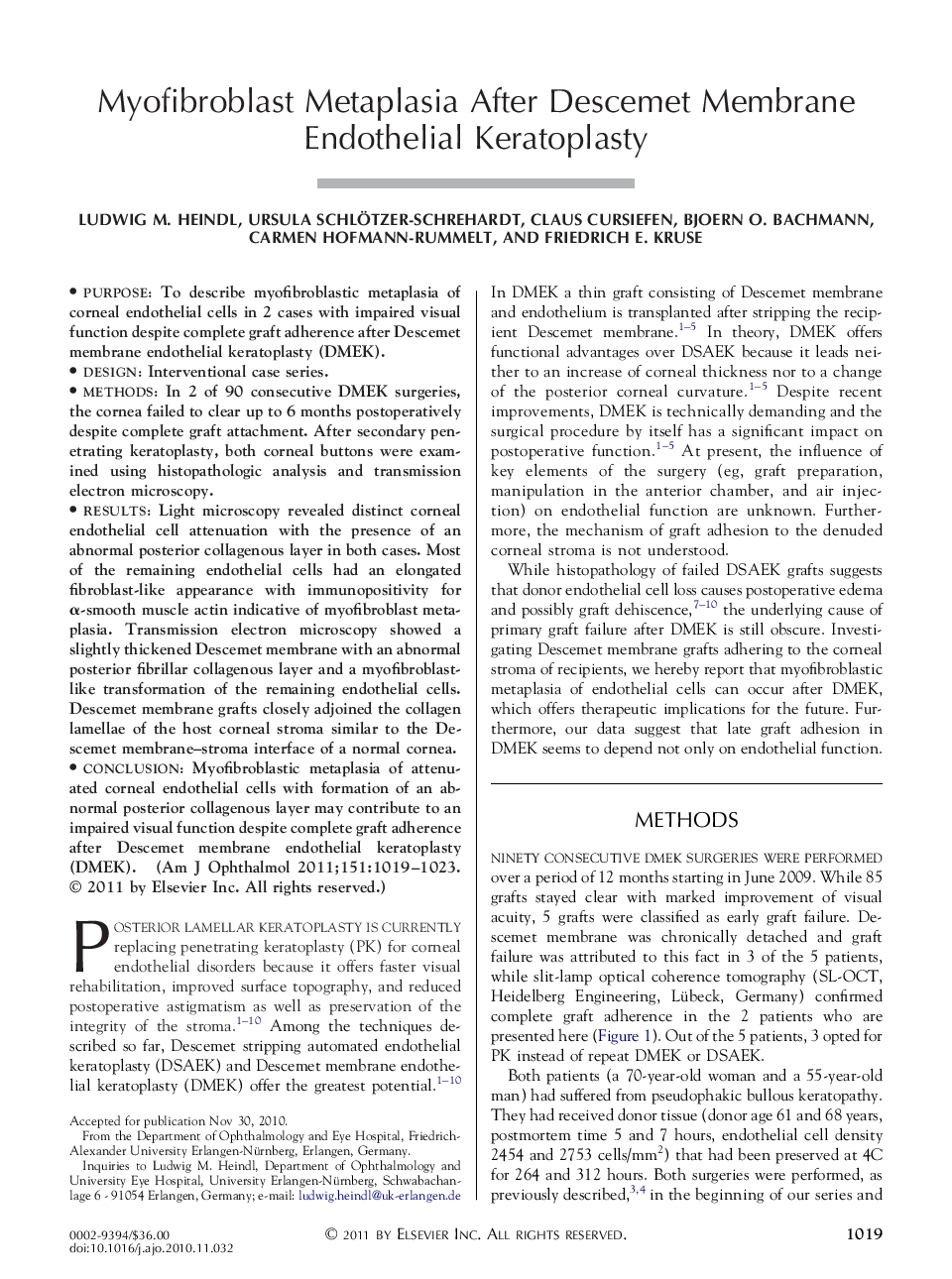| Article ID | Journal | Published Year | Pages | File Type |
|---|---|---|---|---|
| 6196120 | American Journal of Ophthalmology | 2011 | 7 Pages |
PurposeTo describe myofibroblastic metaplasia of corneal endothelial cells in 2 cases with impaired visual function despite complete graft adherence after Descemet membrane endothelial keratoplasty (DMEK).DesignInterventional case series.MethodsIn 2 of 90 consecutive DMEK surgeries, the cornea failed to clear up to 6 months postoperatively despite complete graft attachment. After secondary penetrating keratoplasty, both corneal buttons were examined using histopathologic analysis and transmission electron microscopy.ResultsLight microscopy revealed distinct corneal endothelial cell attenuation with the presence of an abnormal posterior collagenous layer in both cases. Most of the remaining endothelial cells had an elongated fibroblast-like appearance with immunopositivity for α-smooth muscle actin indicative of myofibroblast metaplasia. Transmission electron microscopy showed a slightly thickened Descemet membrane with an abnormal posterior fibrillar collagenous layer and a myofibroblast-like transformation of the remaining endothelial cells. Descemet membrane grafts closely adjoined the collagen lamellae of the host corneal stroma similar to the Descemet membrane-stroma interface of a normal cornea.ConclusionMyofibroblastic metaplasia of attenuated corneal endothelial cells with formation of an abnormal posterior collagenous layer may contribute to an impaired visual function despite complete graft adherence after Descemet membrane endothelial keratoplasty (DMEK).
